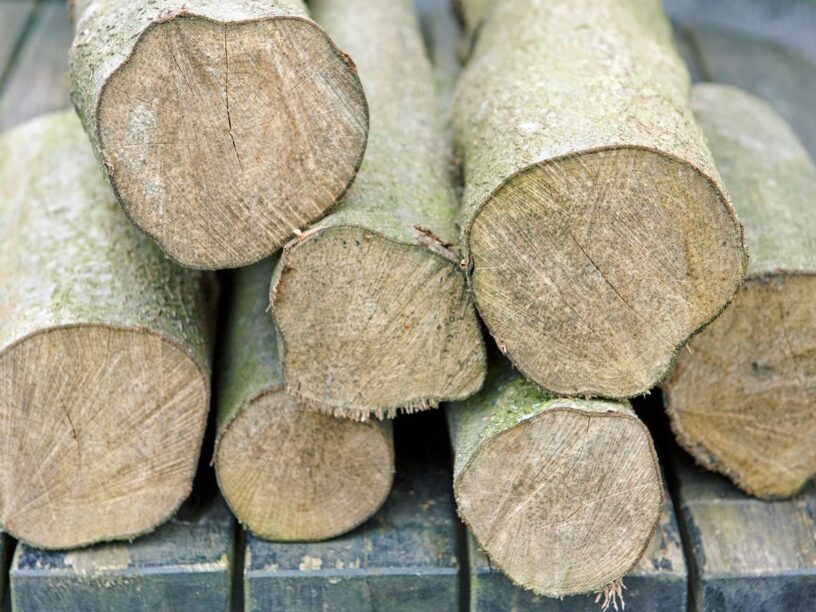After the winter cut, a lot of wood falls, which is suitable for heating but also for processing into furniture. But first, it’s about drying the wood without causing cracks. Here’s how to dry wood properly.
Before wood is processed for DIY projects, it has to be really dry. This is a lengthy process if you want to avoid cracks forming in the wood. Wood should therefore always be dried in one piece or in long planks. To do this, put the wood in a dry place that is protected from rain.
How to turn wood on a lathe: beginner’s guide
How long does wood have to dry for processing?
All free-air storage requires long-term control and a lot of time. If you give your wood this time, you will get a good source material for all woodwork after many years. With the rule of thumb of one year for a centimeter of wood thickness in cut wooden planks, you can plan well.ood from your own garden works well as firewood or lumber. But first it’s time to dry out.
Wood drying: the right storage
When stacking the wood stacking strips are used. At a distance of 40 to 50 centimeters, the transverse strips are inserted by a good 2 cm thickness. This ensures good ventilation.
Penetrating water damages the wood by permanent discolouration of the wood and supports the fungal infestation of the wood. That’s why you should always cover the wood well and protect it from rain.
Another danger in the air drying is the pest infestation. In order to exclude these dangers and to ensure a safe drying process, only the permanent control of the valuable wood is helpful.
If the wood has deformed as a result of storage, a thicknesser helps to restore it to size.
Dry wood properly: this is how you avoid cracks
Often, cracks occur due to improper storage in the wood, which can no longer be closed. The cracking occurs due to drying too fast, such as in the boiler room at high temperatures and low humidity.
The reason for the crack formation is the structure of the wood itself: The volume shrinkage due to the loss of moisture in the outer annual rings is many times greater than the core. So wood dries from outside to inside. Therefore, the so-called “splint coat” shrinks around the still moist core, which then leads to the deep cracks down to the core.
To avoid cracks, there are many tips that are often dependent on the type of wood. Basically, however, end-grain surfaces should always be covered. Because at these surfaces the capillary openings of the wood end and there water can evaporate faster than on the long sides.
Also, you should avoid horizontal surfaces where water can accumulate, either or additionally with corrugated iron covers. Plastic tarpaulins have lost nothing in wood drying, because under the thus closed stacks the water can not evaporate.
Carpenter companies and the wood processing industry use sophisticated air conditioning technology in drying chambers, which reduce the drying process from years to just a few days or weeks and avoid cracking. This wood is sold with the addition “chamber dry” and has only a low residual moisture.
Unfortunately, the term “chamber dry” is not associated with a defined residual moisture. In general, this value can be classified in an order of magnitude of between eight and 20 percent.
Dry wood with chemical additives
There is also the possibility to accelerate the drying process by chemical means, such as with “Pentacryl” manufacturer Preservation Solutions. This is likely to prevent cracking by the polymer resin displacing the water and attaching itself to the capillary vessels of the wood.
Particularly suitable is the means for tree disks. For large planks, it is unfortunately unsuitable due to the large volume. A bottle with almost a liter of content costs about $50, but is reusable.
 Gerhardt Richter is a writer and a trainer at trade technical colleges, specializing in carpentry, plumbing, mechanics and construction.
Gerhardt Richter is a writer and a trainer at trade technical colleges, specializing in carpentry, plumbing, mechanics and construction.




